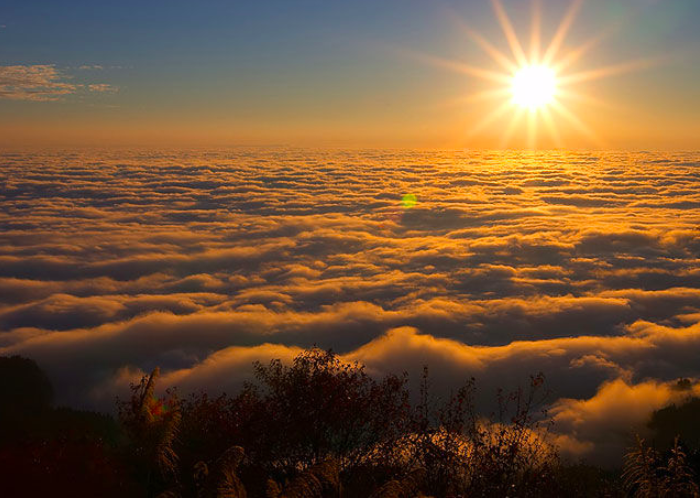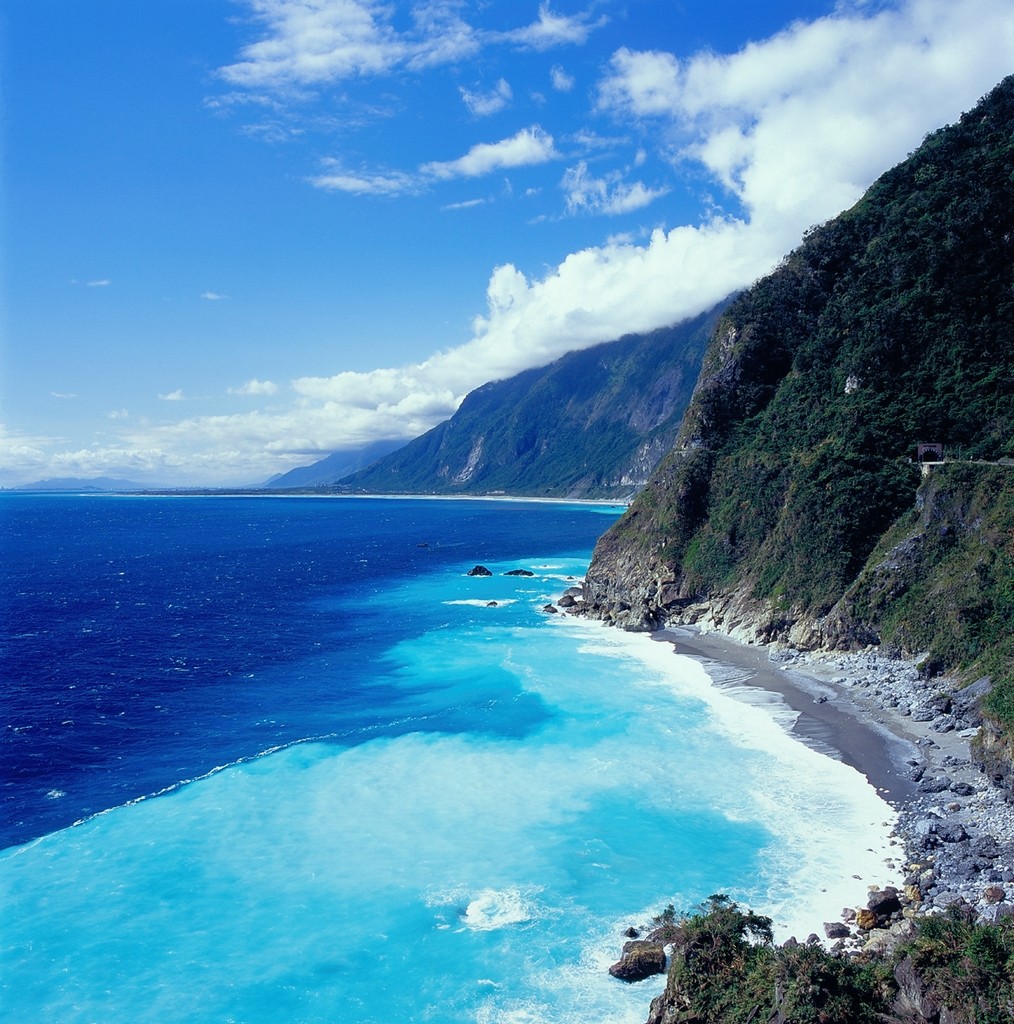10 sightseeing spots in Southern Taiwan you can’t miss. (Tainan)
Different from Northern Taiwan, there are more romantic histories spread over in the old towns and mountains.
Get a taste of Taiwan’s long and storied tea culture and enjoy stunning sunrise among the clouds in Alishan. Walking through hundred years old streets and experience local street food in Tainan.
Suggest Travel Type:
Family ✭✭✭✭✭
Company trip ✭✭✭✭✭
Friends ✭✭✭✭✩
Couple ✭✭✭✩✩
Single ✭✩✩✩✩
Graduation trip ✭✭✩✩✩
“Must go” spots showing in Red/ “Should go” spots showing in Purple
Attractions in Tainan
▎Tainan - Anping Fort (安平古堡)
Anping Fort has been voted to the landmark of Tainan by Tainan residents. You can get a better understanding of the history of Tainan. Lots of various local foods nearby. Popular with both locals and tourists.
In 1624, Dutch built the first fort in Anping, Taiwan, called "Fort Zeelandia", now known as Anping Fort, where has been the administrative center of the Dutch regime, and the hub for trading.
The remaining more than 70 meters long south walls of the outer fort with worn-out red bricks, accompanied by the old banyan roots, chanted its odyssey. The fort is the very historical replica over three hundred years.
The building was originally constructed in square inner fortress and rectangle outer walls. In 1661, the fort was renamed as Anping to commemorate his home town when Guoxingye (Cheng Cheng-Kung) has driven the Dutch out of Taiwan. Therefore, Fort Zeelandia was also known as "King's Fort" or "Taiwan Fort", nicknamed Anping Fort.
▎Tainan - Sicao Green Tunnel (四草綠色隧道)
Tainan green tunnel is famous for its beautiful green waterway surrounded by overgrowth to become a literal tunnel. One would think that this place was a pristine natural wonderland, has a cute nickname as “Mini Amazon.”
The key attraction is a boat ride through what the locals have termed a mini Amazon river. That is not all, as there is a second boat ride option, bringing you on a narrated history of how the rivers here served as transportation for trading.
The beautiful mangrove reserve behind Sicao Dazhong Temple has four different species of mangroves, Rhizophora stylosa, Kandelia candel, Lumnitzera racemosa and Avicennia marin. Tourists can see fiddler crabs and mudskippers under mangroves by telescope that makes it the best natural place for tourists having an eco-tour as well as a beautiful natural scene for photographers.
▎Tainan - Cigu Salt Mountain (七股鹽田)
If you mention Cigu to most people, they will invariable think of salt. Due to the area’s long history of generating salt and its current contribution of over 60% of the nations salt production, it is pretty clear why the area is so renown for this mineral substance. The tourist industry has also helped with the fame. In addition to those just coming to view and photograph the salt plains, there are a couple of tourist sites that have given a boost to Ciqu’s notoriety. The Cigu Salt Mountain and the Taiwan Salt Museum are both a fun way to learn about Taiwan’s former backbone industry.
The Cigu Salt Mountain, or Qigu Yanshan, is both a postcard image for the area and an entertainment site. This quirky place may give you little background into the salt industry, but it’s worth seeing just for how bizarre it is.
The mountain itself is a two hectare mound of salt left over from the Taiwan Salt Corporation’s Cigu Salt Fields. It is climbable, and the surrounding view of the ever-flat area surrounding it is enjoyed by busloads of aged tourists on a daily basis. Steps have been carved into the hard salt to make for easy climbing.
▎Tainan - Jingzaijiao Tile - Paved Salt Fields (井仔腳瓦盤鹽田)
Built during the 23rd year of the reign of Jiacing in the Qing dynasty (A.D. 1818), the Jingzaijiao Tiled Salt Fields were formerly known as Laidong Salt Fields.The site was originally a barren desert. Lying on the sandy beach is a small sand dune, where underground water gushes out from low-lying ground forming a well-like structure.
The name, Jiingzaijiao, was essentially derived from this particular landscape formation. To prevent salt crystals from attaching to the soil, salt miners at Pottery Dish Salt Field manually laid out broken debris of pottery onto the crystallizing ponds of salt fields.
This approach resulted in purer and clearer salt being mined. Under the sunshine, the Pottery Salt Pan displays a resplendent, mosaic like pattern. These features make it a unique cultural landscape of the homeland of salt. Today, it has become an excellent site for tourists to experience salt drying.
▎Tainan - Shennong Street (神農街)
The narrow Kyoto-style street intersects with the bustling Haian Road. Compared with the noise and excitements of the pubs, restaurants and coffee houses on Haian Road, Shennong Street is obviously more tranquil and relaxing. The street is mainly composed of old wooden or concrete two-story buildings. Being attracted to these elegant, beautiful buildings, many young artists and creative workers open their own studio or workshop there. The coffee houses, art galleries, and shops selling all kinds of creative hand-made products complete an experience filled with art and nostalgia.
Shennong Street was the entrance to the Tainan Five Channels area important river ports from the Qing Dynasty. Merchants at the time would all enter Tainan through this street, making it the busiest district. However, a century of evolution has transformed the original river port into a city road. While the street was formerly in decline due to being old-fashioned and outdated, it has become a hub of culture creation and art distribution in recent years, and it’s now a mecca for young art enthusiasts in Tainan. The shops on both sides of the street are all packed with various handmade product designs. To preserve their original ideas, many of the shopkeepers prohibit photography, so please be mindful of the shop's rules. All of the shops on the street are definitely worth a look, so don't just walk down the street, and be sure to check out every store.
▎Tainan - Chihkan Tower (Fort Provintia) (赤崁樓)
Tainan Chikanlou is built by the Dutch in 1652. It was originally called Provintia. In Dutch it means eternity. The Chinese called the building "Chikanlou(Chihkanlou)", "Fanzailou" or "Honmaolou". Although Chikanlou(Chihkanlou) has gone through Ming Dynasty, Qing Dynasty and the Japanese Colonization Period, it basically still maintains its original look.
Chikanlou (Chihkanlou)has been an administration center from the Dutch's occupation period. In 1661, when the Chinese General Cheng Cheng kung repelled the Dutch, Provintia was changed to be Chentien governor's mansion. In the early stage of Qing Dynasty when Taijiang River was still running, the tides could reach Chikanlou(Chihkanlou) directly.
"The sunset in Chikanlou(Chihkanlou)" was one of the eight famous scenes in Taiwan. In front of Chikanlou(Chihkanlou) there are nine sets of stone turtles carrying plates. There were made in Qing Dynasty and were removed from elsewhere to be located here. The legend says that the stone turtle is one of the dragon's nine sons. It shifted into a turtle because it loved to endure heavy objects. There is also a stone horse with broken legs. The legend says that the stone horse's legs were broken by force because it shape-shifted into a monster at night and harassed the residents. Later, Chikanlou(Chihkanlou) declined due to damages caused by civilian upheaval and lack of management. Chinese style building was added to the original Dutch architectural body. For a time the place hosted the worship for Guanshiyin Budda.
▎Tainan - Guanziling Mud Hot Spring (關子嶺泥漿溫泉)
Guanziling is the peak of Zhentou Mountain, Tainan City. The mountain was the residence of Pingpu Tribe until 1898, when Japanese soldiers found a hot spring and developed the area. Guanziling Hot Spring is a famous hot spring in southern Taiwan. The spring water is dark gray and bitter, emerging from the rocks.
Guanziling Tourist District is famous for the hot spring, Hongye Park, Daxian Temple, Biyun Temple and Xiangong Temple. The hot spring is on the side of the mountain, where hotels, restaurants and spring pools can be found. The natural gas and the spring water exist together in the cave, presenting a peculiar view.
One thing you can’t miss is exfoliating by fish in the spring water, super unique and tickle experience that made you won’t forget.
Attractions in Chiayi
▎Chiayi - Eryan Ping Trail (阿里山二延平步道)
There are three things must see here, tea fields, sea of clouds, and sunset in Eryan Ping Trail.
It needs some luck to see those amazing view, but walking in Eryan Ping Trail can enjoy the relaxing atmosphere in a minute.
The trail is quiet easy, 800 meters and take about 50 minutes to look around. There are also observatories on the way.
In winter time, there are more opportunities to see sea of clouds, and waterfall of clouds, attracting lots of professional photographers to chasing beautiful scenes.
▎Chiayi - Shengli Tea Farm (生力農場茶園體驗)
Sheng Li Farm is on Tai 18 Highway (around 56k of Alishan Highway) and at the elevation of 1,250m. The farm is embraced by high mountains and has pleasant weather with Xi-Ding Xiang-Shan Viewing Platform next to it.
http://www.42-5km.com.tw/56km.htm
Xiang-Shan can be seen from the platform, which offers great views from a high position. Tourists can also watch sunrises, rainbows and the famous cloud fall in Xi- Ding here.
▎Chiayi - Alishan Forest Railway Sunrise (阿里山小火車觀日出)
High up in the mountains of Taiwan is a forest filled with old world charm and mystic atmosphere. Featuring sacred trees, zen spaces, green valleys, world-class sunrises, Japanese-built trains, and seas of cloud hugging high-altitude peaks, the Alishan National Scenic Area is a must-visit destination when planning your trip around this island nation.
As a top tourist draw since the 1920s, hoards of Chinese tourists come here virtually everyday but you’re in for a treat if you decide to come up to Alishan on your own. The truth is though, planning a trip to this recreational forest isn’t necessarily the easiest.
Part of it is because of the lack of English information and the other part is that there are simply many methods and steps to get to the top.
There are so many amazing trails to go on so make sure you bring your hiking boots or comfortable trainers! All of them are extremely well sign posted making it super-easy to navigate and the tourist information point in the main square will help you with any questions. They also have maps all along the trails telling you where you are currently. The routes are deep within the forest and open up to some great views along the way.
▎Chiayi - Southern Branch of the National Palace Museum (國立故宮博物院南院)
The Southern Branch of the National Palace Museum (NPMSB) is located in Taibao City, Chiayi County near THSR Chiayi Station. Other than the museum building, a man-made lake stands right in the center of the NPMSB compound. A scenic bridge crossing the southern part of the lake leads to the museum’s reception hall on the second floor.
Inspired by three traditional Chinese painting styles - thick ink, "flying white" and ink wash, the NPMSB compound is divided into the sturdy space for display and archival purposes, and the fluid space for public receptions and walk-throughs.
Elements of Chinese, Indian and Persian cultures are woven into a tapestry of Asian civilizations here. The museum building’s two streamlined masses remind visitors of the cultural symbols of dragon, elephant and horse. In continuation of the building’s dynamic style, the scenic bridge looks just like some Chinese cursive script. The bridge’s rhythmic passageway seems to be encouraging visitors to enter the museum, by taking a most unique and comfortable walk




